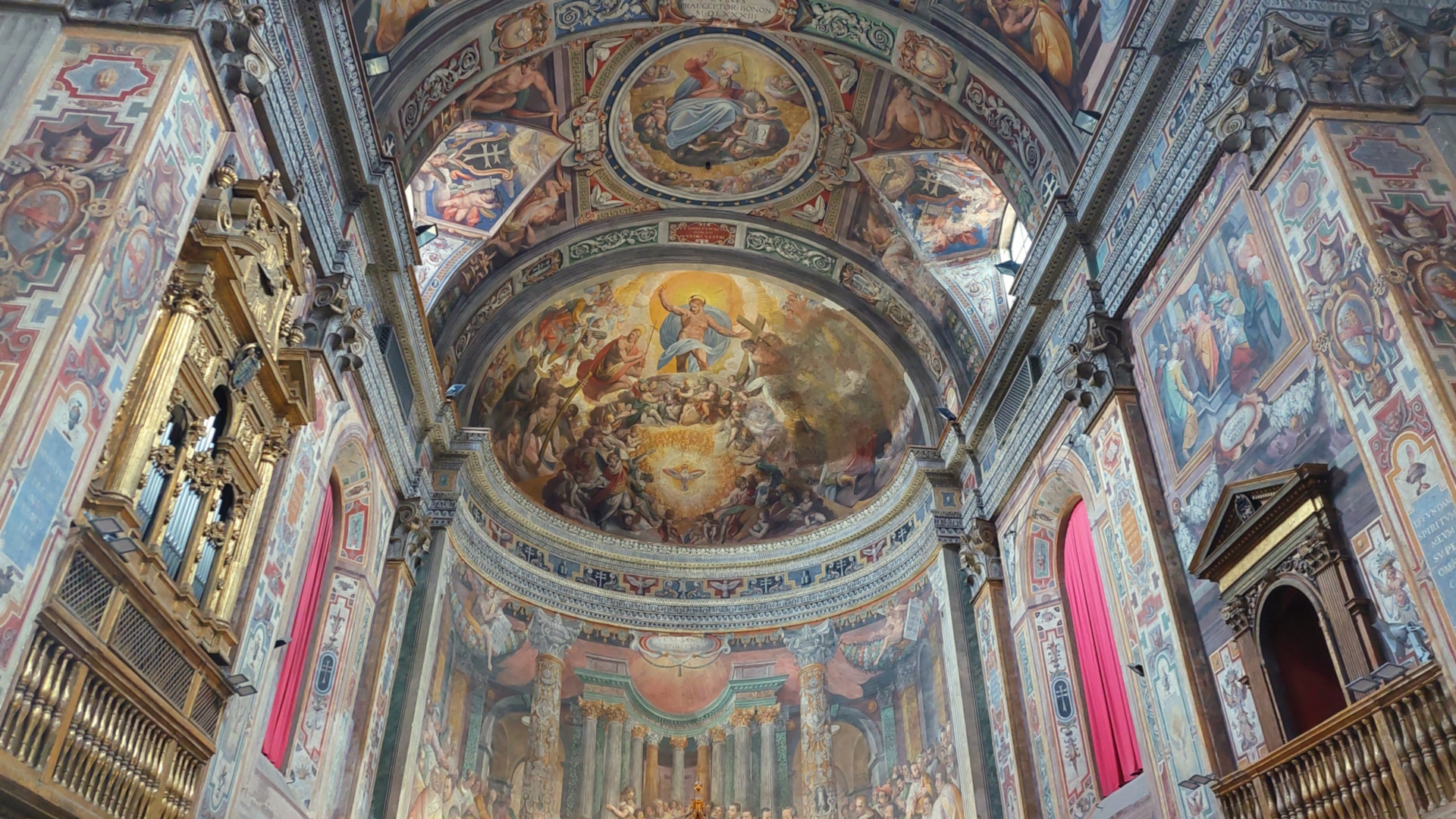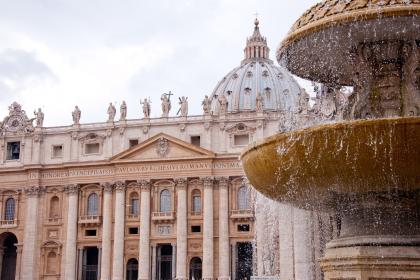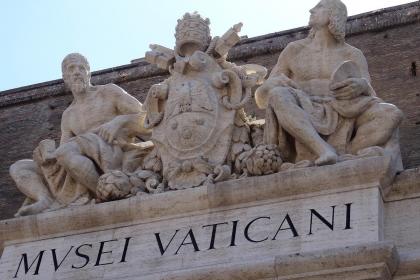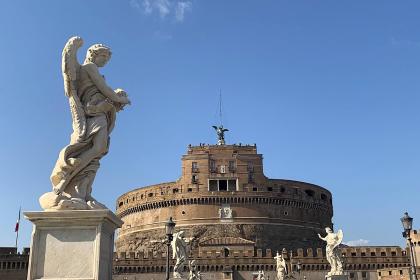
La iglesia se encuentra en el Rione Borgo, cerca del Vaticano, en el lugar de una iglesia construida en el siglo VIII por orden del rey Ine de Sassia y dedicada por él a la Virgen. El rey hizo construir el edificio sagrado junto con un hospicio para los peregrinos de la "nación" sajona. Destruida y reconstruida varias veces a lo largo de los siglos, la iglesia fue reconstruida en gran parte, tras el saqueo de Roma en 1527, por Antonio Sangallo el Joven (1538 - 1544), y terminada durante el pontificado de Pío V. A partir de entonces tomó el nombre de Santo Spirito in Sassia.
La fachada se atribuye a Ottaviano Mascherino, quien la ejecutó por encargo del papa Sixto V, según un diseño de Sangallo. Es todo de yesería, en dos órdenes diferenciados: el primero tiene seis pilastras incluyendo la portada y cuatro hornacinas; el segundo tiene cuatro, incluido un gran anteojo coronado por el escudo de armas del pontífice.
El interior, de gran nave con cinco capillas a cada lado y gran ábside, se caracteriza por líneas elegantes y una rica decoración pictórica. El artesonado de madera policromada fue diseñado por Antonio Sangallo el Joven y tiene grandes similitudes con el del Palacio Farnese, del mismo autor. En la cuenca del ábside, pintado al fresco en 1582 por Jacopo Zucchi, alumno de Giorgio Vasari, se representa al glorioso Redentor sobre las nubes. Debajo de Cristo, santos y ángeles coronan la brillante paloma del Espíritu Santo, que desciende a la galería inferior, donde un gran marco perspectiva formado por preciosas columnas y arcos forma el telón de fondo de la representación de Pentecostés.
Destaca el campanario del siglo XV, probablemente construido según un diseño de Baccio Pontelli o Giovannino de' Dolci entre 1470 y 1476.
Foto: sitio web oficial Iglesia de Santo Spirito in Sassia
Basílica de San Pedro en el Vaticano

 Condividi
Condividi
Los Museos Vaticanos y la Capilla Sixtina

 Condividi
Condividi
Mausoleo de Adriano (Castillo de Sant'Angelo)

 Condividi
Condividi
Informaciones
For the timetable of the masses and visiting conditions, please consult the contacts.
 Condividi
Condividi
Location
Para conocer todos los servicios de accesibilidad, visite la sección Roma accesible.











































